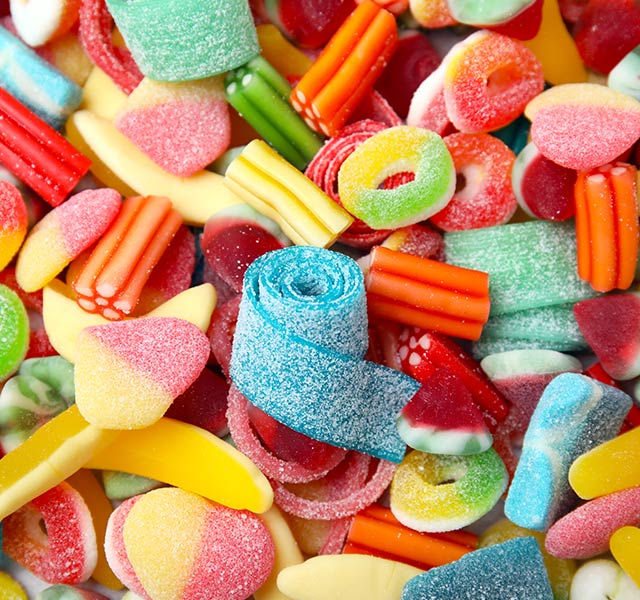Most people know it’s not a great idea to go overboard on sugar. And yet most people can’t resist a sweet treat. “Sugar is easy to crave,” says Ruth Franklin, RDN, a registered dietitian nutritionist at Henry Ford Health.
Unfortunately, a high-sugar diet can contribute to health problems, from excess weight to more subtle effects on the body—effects that a lot of us are already experiencing, without even realizing it.
Franklin shares the ways that too much sugar can harm your health and offers expert tips for cutting back.
Effects Of Sugar On The Body
Eating too much sugar is a factor in obesity. It can also cause insulin resistance, which increases the risk of conditions such as type 2 diabetes and cancer.
But a high-sugar diet can also cause:
- Poor sleep: “A lot of research shows a connection between added sugar and sleep quality,” Franklin says. A high-sugar diet can lead to tossing and turning at night, resulting in daytime fatigue.
- Low energy levels: In addition to impacting sleep, sugar affects your pep in other ways. Refined sugar causes a temporary spike in energy levels. But that spike is typically followed by a big crash. “Those spikes and dips can lead to periods of feeling sluggish or fatigued throughout the day,” Franklin says.
- Irritability: Sugar highs and lows also cause mood swings and irritability. “Those dips in energy can worsen stress or increase symptoms of disorders like anxiety and depression,” Franklin notes.
- Acne: “Eating a lot of sugar leads to a spike in the production of insulin, the hormone that brings down levels of blood sugar,” Franklin explains. Unfortunately, insulin can also increase the production of oil in the skin, leading to acne breakouts.
- Inflammation: A diet high in refined sugar causes increased inflammation throughout the body. And chronic inflammation is linked to a host of problems, including diabetes, cancer, heart disease and autoimmune diseases.
- Cravings: “Food companies want to make foods ‘hyperpalatable’—in other words, super tasty—so that we want to eat more. Sugar is a big component of that hyperpalatability,” Franklin says. “The more sugar we eat, the more we crave. That can lead to weight gain and all the other problems that go along with too much sugar.”
How Much Sugar Should I Have In A Day?

Meet With A Dietitian
Sugar isn’t all bad. Some good-for-you foods, like fruits, vegetables and dairy products, contain natural forms of sugar. But many more foods have sweeteners like refined sugar, molasses or high-fructose corn syrup added during the production process. It’s those added sugars that you want to avoid, Franklin says.
How sweet is too sweet? The American Heart Association provides these guidelines for adults:
- No more than 9 teaspoons (36 grams) of added sugar per day for men
- No more than 6 teaspoons (25 grams) of added sugar per day for women
In reality, the average American consumes 17 teaspoons of added sugar per day—double or triple the recommended amounts. That adds up to a whopping 60 pounds of sugar per year.
How To Cut Back On Sugar
Think your sweet tooth is untamable? Think again. Even in our sweets-obsessed society, there are things you can do to cut back on sugar.
- Check the labels: Unsurprisingly, sugar is found in sweet treats such as desserts, sodas and candy. But added sugar (including natural sugar substitutes like honey or agave nectar) also hides in places you might not expect, such as sandwich bread, pasta sauce and salad dressing. “Sugar is snuck into a lot of foods and drinks—including foods you might think of as healthy, like yogurt or trail mix,” Franklin says. Read nutrition labels to keep tabs on how much sugar you’re really consuming.
- Distract yourself: When your sweet tooth flares up, don’t automatically reach for the cookies. “Take a few breaths and think about whether you’re actually hungry,” Franklin says. If so, grab a healthier snack, like a piece of fruit. If not, drink some water or take a short walk until the craving subsides. By being mindful, you can avoid snacking on sweets you don’t want or need.
- Fill up on good stuff: Plan meals and snacks that are high in fiber and protein. Those foods will help you feel full longer so you’re less likely to experience snack cravings. Try unsweetened peanut butter on an apple or banana for a protein boost with some natural sweetness.
- Look for healthy sweets: You don’t have to give up dessert forever. Instead, look for smarter choices. Instead of a candy bar, dip fresh strawberries in a bit of melted dark chocolate. Sprinkle some blueberries and raspberries into unsweetened yogurt. Or make banana “nice cream” by freezing banana slices and pureeing them until creamy. (You might need to add a bit of milk or other liquid to help it blend.)
- Be patient: If you’re used to eating a lot of sweet stuff, your body will crave it. But as you cut back, your cravings will calm down. Once you’ve broken the sugar habit, you won’t even miss it. In fact, you might start noticing how much better your body feels without the sugar highs (and lows). And that feeling of freedom from sugar is sweet indeed.
While it’s important to avoid excess sugar, Franklin says, it’s not something you need to fear. In small amounts—following American Heart Association guidelines—sweets can bring important connections to culture and pleasure. A hint of sweetness can also make healthy foods more appetizing (think a bit of honey-sweetened dressing on a salad of bitter greens). When it comes to sugar, it’s all about balance.
Reviewed by Ruth Franklin, RDN, a registered dietitian with the Henry Ford Center for Health Promotion and Disease Prevention.



